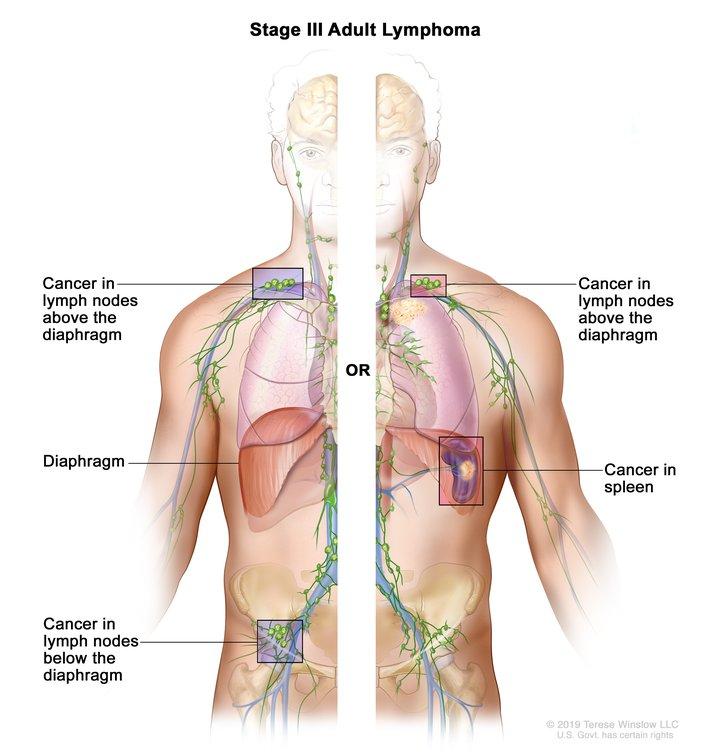Mortality Following Chemotherapy for Hodgkin Lymphoma
, by DCEG Staff
Lindsay M. Morton, Ph.D., deputy chief and senior investigator in the Radiation Epidemiology Branch, and Dr. Graça Dores of the Food and Drug Administration and adjunct investigator in DCEG, led an assessment of the mortality experience of patients treated with chemotherapy for classical Hodgkin lymphoma (cHL) in the largest population-based study of more than 20,000 individuals diagnosed with cHL during 2000-2015. The findings were published September 18, 2020, in the Journal of Clinical Oncology.
Over the last 50 years, chemotherapy for cHL has evolved from the MOPP (mechlorethamine, vincristine, procarbazine, and prednisone) regimen to a less toxic regimen - ABVD (doxorubicin, bleomycin, vinblastine, dacarbazine), which has resulted in improved patient survival and remains the predominant first-line treatment in the U.S. During this time period, the use of radiotherapy in cHL treatment plans has decreased substantially. While the long-term cHL mortality experience has been well-characterized among patients during the previous era of MOPP and radiotherapy, the mortality profile associated with ABVD, is not well understood.
In this study, the study team identified patient subgroups and timeframes during which patients treated with chemotherapy were likely to experience a substantial burden of non-lymphoma deaths following cHL diagnosis. Compared to the general U.S. population, the greatest risk of noncancer deaths (2 to >20-fold) among adults diagnosed with cHL was observed for interstitial lung disease, infections, and adverse events related to medications/drugs, particularly within the first year of diagnosis and among older (60-74 years old) patients with advanced stage cHL. The investigators also observed slightly lower but significantly increased risk of death from heart disease relative to the general U.S. population; however, because heart disease is so common in the U.S., this translated into the highest number of excess deaths from noncancer causes following cHL.
These results suggest that despite improvements in cHL treatment approaches, patients continue to face increased non-lymphoma mortality risks from potentially preventable causes. Surveillance and early interventions may decrease non-lymphoma deaths in the future, particularly among high risk groups.
Reference:
Dores GM et al. Cause-Specific Mortality Following Initial Chemotherapy in a Population-Based Cohort of Patients With Classical Hodgkin Lymphoma, 2000-2016. J Clin Oncol. September 18, 2020. DOI: 10.1200/JCO.20.00264. [E-pub ahead of print]
